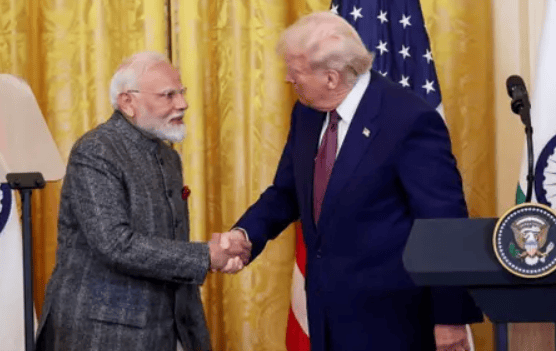In a dramatic move that signals rising tensions between the United States and one of its largest trading partners, President Donald Trump has announced a 25% tariff on all Indian imports, along with an additional penalty for India’s ongoing purchases of Russian arms and energy.
Despite calling India a “friend,” Trump said the U.S. could no longer tolerate India’s trade practices and deep economic links with Moscow. The penalties are part of Trump’s broader global tariff campaign and come just days before a self-imposed August 1 trade agreement deadline for dozens of countries.
“India is the largest buyer of Russian energy and military hardware, even as the world demands Russia stop the killing in Ukraine,” Trump posted on Truth Social. “India will therefore be paying a 25% tariff plus a penalty, starting August 1.”
Why This Matters
India has historically maintained strong defense and energy partnerships with Russia. Since the war in Ukraine began in 2022, Delhi has increased its purchases of discounted Russian oil while continuing major arms deals, drawing criticism from Western allies.
At the same time, the U.S. goods trade deficit with India reached $45.7 billion in 2024, making it a prime target for Trump’s protectionist policies.
Trump has also criticized India’s import tariffs and non-tariff barriers on U.S. goods as "obnoxious," claiming they have placed American businesses at a disadvantage.
Key Takeaways
Tariffs Begin August 1: All Indian imports into the U.S. will be subject to a 25% tariff, plus an additional unspecified penalty.
Trade Deficit Targeted: Trump cites India’s $45.7 billion trade surplus with the U.S. as justification.
Russia Ties Punished: India’s continued purchases of Russian arms and oil are central to the White House’s decision.
Part of Global Push: India is one of several countries under pressure to strike a new trade deal with the U.S. before the August 1 deadline.
Other Deals Finalized: Trump has already reached agreements with the EU (15% cap), UK, Japan, and Vietnam, while talks with China have been extended in principle.
Market Volatility Expected: Investors are watching closely as fears of a global trade war resurface following Trump’s “Liberation Day” tariff policy announced in April.
India’s Position
India has not formally responded to the new tariffs but has historically defended its right to pursue strategic autonomy in defense and energy matters. With general elections approaching in India, Prime Minister Modi may face pressure to respond decisively to Washington’s demands.
Economists warn that retaliatory tariffs could impact a wide range of U.S. exports to India, including aircraft, agricultural products, and tech services.
What’s Next?
With only days left until the August 1 deadline, India and the U.S. remain locked in a tense standoff. The situation could have major implications for global trade flows, supply chains, and geopolitical alliances—especially as Washington aims to isolate Moscow economically.
Start learning AI in 2025
Keeping up with AI is hard – we get it!
That’s why over 1M professionals read Superhuman AI to stay ahead.
Get daily AI news, tools, and tutorials
Learn new AI skills you can use at work in 3 mins a day
Become 10X more productive


